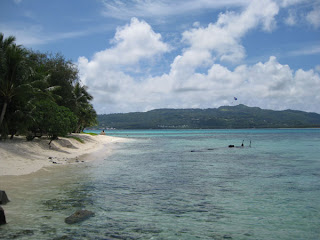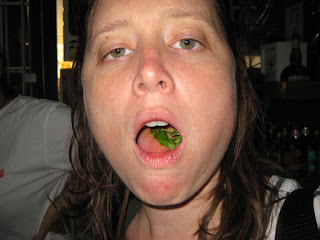I found a great website on the Barong. Here is more information on the national dress of the Philippines.
There’s really something about the Barong Tagalog that appeals to unassuming, low-key personalities with a penchant for subtle elegance. [...]
HOW PINA FABRIC IS MADE
Ever wondered what makes the pina fabric so expensive? Here’s an eye-opener on how much tedious work comes with every meter of this elegant craft.
-The Spanish Red or Native Philippine Red, the kind that has leaves spanning an average of 2 meters in length, takes about one and a half years to mature. As soon as the fruit is just about ripe, the leaves are likewise ready for harvesting.
-The leaves are snapped off the plant with a sharp tug on the tip and the thorny edges are pulled off.
-During extraction, which could be as long as three days, the workers squat on a long board where the leaves are placed. The leaves are then scraped using a broken china plate. (Some suggest the use of antique porcelain to be the best). This is done by folding over a few inches of the leaf base and striking it with the heel of the hands to reveal the first set of fibres called bastos or coarse fibres. These are extracted and set aside.
-The leaf is then scraped once more with a coconut shell to bring out a finer fibre called the linawan. This, too, is extracted and set aside.
-An average pineapple leaf could produce 75% of the coarse or Bastos fibre and 25% of the finer linawan fibre.
[...]
-When the extractors come to scrape a quantity of about 1,000 leaves, the bundles of fibres are washed, usually at a nearby stream. It is scraped again gently with the use of a seashell to remove remaining unwanted impurities making the strands whiter in appearance.
-The strands are then partially sun-dried on the grass and beaten with a bamboo stick to separate the fibres.
-It is then hung on a line to dry, combed and tied upside-down to a slim bamboo pole for knotting.
-The ends are cut off with a sharp piece of bamboo and the threads are coiled around a clay pot. The pot is placed with sand to prevent tangles. The fibres are then taken to traders for weighing.
-A loom made of coco lumber with bamboo foot treadles are used to weave the fabric. The thread is coiled on cylindrical frames and the thread for weft is wound on bobbins made out of small pieces of bamboo.
-The average production of a weaver is about half a meter/day. The process is painstakingly slow and broken threads need constant knotting.
-After weaving, the off-white colored cloth with a rather smoky smell is washed with rice water or citrus juice.
-The cloth is then sent out for embroidery.
To sum up, the whole process from leaf plucking to the finished woven cloth, would take about four months of continuous work to produce only about 20 meters of the precious fabric. That’s why several attempts have been made to develop a machine that would do the work but the thread being so fine and prone to breaking made this impossible.
STEPS IN BARONG TAGALOG EMBROIDERY
Much as the pina fabric is tediously woven for that elegant texture, the embroidery is done with an equally delicate and painstaking process. The old-world craft has been handed down from generation to generation and have evolved to adapt to the times. However, the innate skill remains intact and the subtle elegance is preserved.
-First, embroidery pattern is chalked on the cloth
-The cloth is stretched using a round or rectangular frame called bastador.
-With the cloth ready for embroidery, they proceed with using a variety of thread from white or colored, cotton, silk, or pina.
-After embroidery is done, they are lightly stretched between two rectangular frames and cleaned from the underside using a washcloth and detergent.
-After drying, the cloth is ironed before delivery to contractors.
Wow, it does sound like a painstaking process! There is one pararagraph that distress me to no end though:
Barong Tagalog Care Tips:
-Do not dry clean it. It contains chemicals that may make the Barong Tagalog brittle and therefore shorten its life span.
-Using washing machine for Barong Tagalog is a crime.
Hand washing is still the best way to clean the barong. When washing Barong Tagalog made of Jusi or Pina, one mixes a calculated amount of detergent with water and mixes it thoroughly until the detergent is completely dissolved in the basin. Then soak the Barong Tagalog on one whole day or do it overnight. After this step, use a soft brittle toothbrush with a tiny amount of detergent to brush off the stubborn dirt on the Barong Tagalog especially on collar, underneath the cuffs, arm holes, etc. and then rinses it with an upward and downward motion on water. However, hand-embroidered Barong Tagalog should not be scrubbed. A cardinal rule when one rinses the Barong Tagalog, one does not squeeze nor twist the fabric. Drip it dry by laying it flat so it will not create too much crease. The less sunlight for the Barong Tagalog , the better to avoid discoloration. One must iron the Barong Tagalog while it is still damp in a moderate heat to retain its original shape.
You have to be kidding right? This is wrong piece of clothing to give to someone who throw in her darks and her lights in a hot washing machine, and stuffs dry-clean only item in there as an after-thought.













